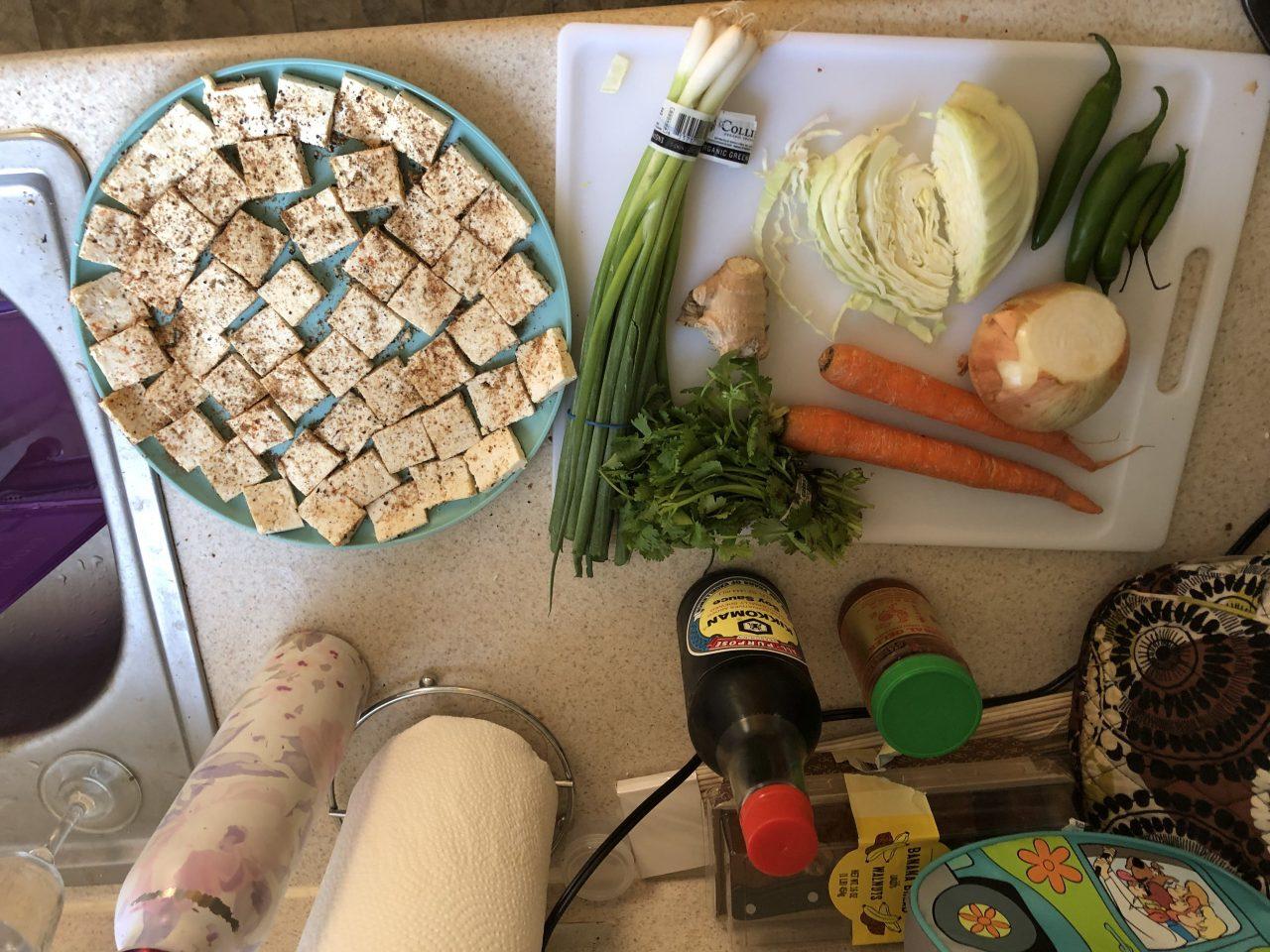Photo by Natasha Sahu
You could go to any city in an Asian country and come across at least one street food stall on your way out of the airport. Growing up, we went back to India to see our family many times, and each time, I heard the same warning: “Don’t eat the street food, your American stomach is too sensitive for it.” Yet, the temptation was always too much, and every time I stepped outside, I was bombarded by the smell of the fresh pakoras and kati rolls and hot chai. The siren call was too much, and I would give in right away; pleasure is always worth the pain. As they say in India, why cry when the crow has already eaten all your crops? Unlike my brother, I was blessed with a stronger immune system to withstand the challenges of street food. Maybe it was because I was actually born in India or maybe it’s because I got the food genes. Who knows?
Every summer in India, my mom’s side of the family travels from whatever corner of India they live in to Bangalore, India’s “Silicon Valley,” to camp out in my uncle’s small home. All of my aunts and cousins spend days hanging out and having fun until the short month-long vacation comes to an end. If I’m lucky, my family flies back to India every few years as well. The biggest problem with hosting 15–20 people for a whole summer is feeding them. Street food always comes in as a cheap, filling lifesaver. Street food doesn’t just entail snacks but whole meals for cheap that can feed large groups of people. Easier than cooking, my aunts always relied on sending the oldest male cousin down the street, and we would sample a different street food every day.
My first trip back to India was 2006, and at eight years old, I was introduced to the concept of Indian-Chinese street food. Much like American-Chinese food, the inaccuracy is what makes it so flavorful. The history of Hakka Chinese residents moving to India has a big influence on the type of Chinese food available. While American-Chinese food is dominated by sticky, sweet, citrusy sauces on different fried meats and soy sauce mixed in rice, Indian-Chinese consists of foods like Manchurians, chicken lollipops, spicier Szechuan-inspired styles of cooking and more vegetarian options. While America does have its own street food (how many hot dogs and chicken and rice carts have you seen in New York?), nothing can really compare to the sheer abundance and variety that India offers. Staying in India’s capital city of New Delhi, you could eat from a different street food cart for every meal, every day, and still have enough variety to last you at least five years.
In the U.S., our perception of “cheap” is very different from countries like India because of the impact of standard and cost of living, the economy and a bunch of other factors beyond my understanding. While I might look at something that’s $1 as “cheap” here, my relatives in India would consider us getting ripped off if we are paying more than 50 cents for one wrap. Therefore, street food is extremely cheap, filling and doesn’t break the bank, making it feasible to eat it more. This also explains while American established fast-food restaurants such as Taco Bell and McDonald’s or fast fashion stores like H&M and Forever 21 are costlier in India because the conversion rate directly applies, and what should be considered fast or cheap consumption ends up being more expensive than what is locally available.
But let’s talk: Nobody ever told me groceries were going to be this expensive. You walk into HEB and the $1.50 produce adds up, making me dream of a time when I could pay 30 cents and get a hot, fresh dosa. Because of food pricing, many people on a budget end up heavily relying on carbs because they are extremely cheap and fill you up. Something like a stir fry ended up costing me about $5, without buying the tofu. When buying ingredients, fettuccine noodles are so much cheaper than buying lo mein or udon noodles, and let’s be real, we’re all broke college students here (or at least cosplaying as one). Although this isn’t the most authentic version, here’s my family’s version (with my improvisations) for an Indo-Chinese noodle stir fry.
Vegetarian Stir-Fry Noodles
Serving size: five really hungry college kids
Ingredients:
-
1 pack fettuccine noodles (16 oz)
-
½ head of cabbage
-
1 medium onion
-
3 carrots
-
2 Thai green chilis
-
2 serranos
-
1 tbsp minced ginger
-
1 tbsp minced garlic
-
Bunch of green onions
-
As much cilantro as you want
-
¼ cup canola oil
Tofu:
-
1 container extra-firm tofu
-
1 tsp salt
-
1 tsp pepper
-
½ tsp cayenne
-
½ tsp garam masala
-
¼ tsp onion powder
-
¼ tsp garlic powder
-
2 tbsp canola oil
-
Sauce:
-
1 shot glass of soy sauce
-
2 tbsp sambal (or chili-garlic sauce)
-
Pinch of salt and pepper
-
Squirt of Sriracha
-
Shake of chili flakes
-
1 tsp honey
-
1 tsp vinegar
Instructions:
-
Press block of tofu with a heavy object for 30 minutes.
-
Pre-cut all your vegetables and pre-mix your sauce because you’re working quickly on high heat.
-
Cut tofu into thin 1 x 1 inch squares.
-
Lay them out on a plate and season with the spices on all sides.
-
Fry each side for a few minutes on medium heat until brown and crisp.
-
Boil your pasta according to package instructions.
-
Stir-fry your onions for a minute.
-
Add in the ginger and garlic and stir for a minute.
-
Add the rest of the vegetables and toss for 2 minutes.
-
Add noodles and sauce mix.
-
Stir-fry another 5 minutes.
-
Turn off heat and top with green onions and cilantro.
Notes: Replace chilis with a couple of jalapeños or bell peppers if you can’t tolerate the heat.
This recipe is vegan, but you can scramble in three eggs in between your onions and the ginger-garlic.






